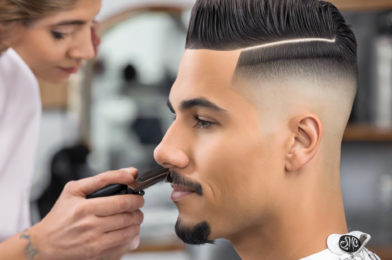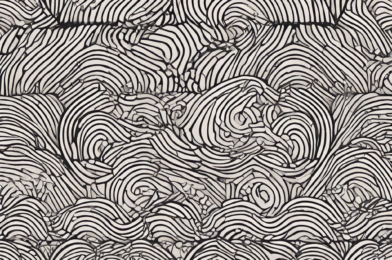The world of barbering is an art, and like all artists, barbers need a portfolio to showcase their skills and talents. A well-curated portfolio is a powerful tool for any barber, whether you’re a seasoned veteran or just starting out. It can showcase your best work, attract new clients, and even help you land collaborations with industry influencers and brands.
So, how do you go about building an impressive portfolio? First, consider the purpose of your portfolio and your target audience. Are you looking to attract new clients to your chair, or are you aiming to build an online following and collaborate with brands? Perhaps you want to enter barbering competitions or simply showcase your skills to potential employers. Understanding your goal will help you curate a portfolio that hits the mark.
The key to a great portfolio is variety. Be sure to include a range of looks and styles that showcase your versatility as a barber. From classic cuts to modern trends, and everything in between, aim to display your ability to adapt to different client preferences and needs. It’s also important to showcase before-and-after shots, as these really highlight your skill and transformation talent.
Another important aspect is lighting and photo quality. Good lighting can make all the difference in showcasing the details of your work, so aim for clear, well-lit photos that accurately represent the cut, color, and shape. Consider investing in a good camera or working with a photographer to really make your portfolio shine.
In addition to showcasing your technical skills, try to tell a story with your portfolio. Contextualizing your images can make them more engaging and help potential clients envision the experience and outcome they can expect. You could include a brief description of the client’s previous hair issues and how you helped solve them, or even a testimonial from a happy client.
Presenting your work attractively is also key. Consider investing in a high-quality portfolio book or creating an online portfolio using a website builder or social media platforms like Instagram or Facebook. This will allow you to easily share your work with potential clients and industry professionals.
Lastly, don’t be afraid to update and curate your portfolio regularly. As your skills evolve, so should your portfolio. Keep it fresh and exciting by adding new looks and styles, and don’t be afraid to remove older work that no longer represents your best talent. Building a barbering portfolio takes time and dedication, but it’s an incredibly valuable tool that will help propel your career forward.
There are many ways to showcase your work as a barber, and building a portfolio is the perfect way to do so. Whether you’re just starting out or are a seasoned professional, curating a collection of your best work can open doors to new opportunities and showcase your talent to the world. So, grab your clippers and let’s get styling – your portfolio awaits!









